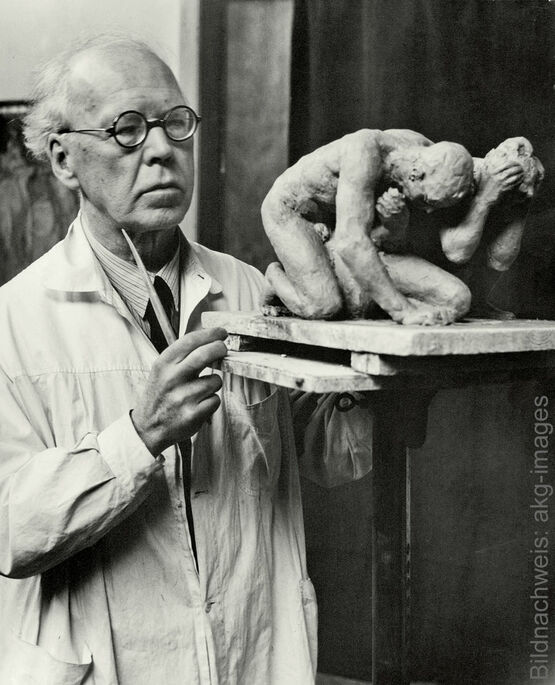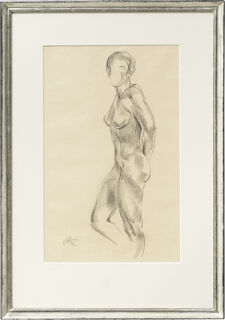
Georg Kolbe
1877-1947
It was only during a stay in Rome from 1898 to 1901 that Georg Kolbe began to engage with sculpture. The artist, who was born in Waldheim, Germany, in 1877, had travelled to Rome as an already trained painter and graphic artist who had studied in Dresden, Munich and Paris in the previous seven years and already had some initial successes. As with many artists of his generation, Rodin's work in Paris had made a deep impression on him, and since the sculptor Louis Tuallion offered and provided him with technical support during his first attempts in Rome, he quickly found his way into sculptural work. It was not until 1904, in Berlin, that he decided to concentrate entirely on the art of sculpture. Kolbe quickly gained recognition: he became a member of the Berlin Secession and Paul Cassirer, the city's most important art dealer, soon represented him.
With his "Dancer" (1910) he finally had his breakthrough. He joined the ranks of the most important German sculptors of his time. The "Dancer" is still one of his most famous works today and is said to have become an idol with its "modern" hairstyle and its self-forgetful posture reminiscent of the highly topical expressive dance of the time, to which the art-interested youth made a veritable pilgrimage.
The nude figure continued to be at the centre of his work, often linked with the motif of dance until the 1920s. Kolbe's works after World War I bear witness to his involvement with Expressionism, later turning towards the classical monumental. When Kolbe died in 1947, he left behind a body of work that can be found in renowned collections all over the world.

